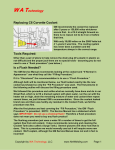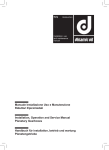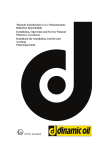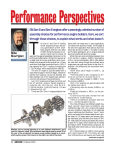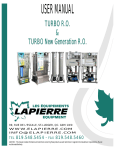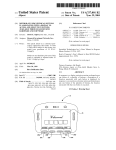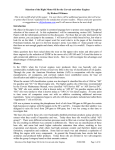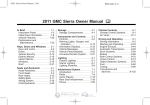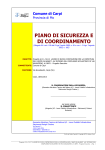Download GERALD D. UTTRACHI
Transcript
W A Technology Changing My Own Oil: Including; Checking Magnetic Drain Plugs and “Catch Can” What Oil to Use? In addition to Chevy recommending Mobil 1 for use in, at least, the dry sump C7, I was an early adopter of the product. My new Datsun 260Z was a great car; however it was the 1st year of new federally mandated pollution controls that caused problems. The “Z” had an exhaust air pump, hot water channeled to the carburetors etc. There was a problem when accelerating rapidly and the Datsun District Rep suggested using a product Mobil made for the military in Alaska, called Mobil 1. He said to replace the oil in the two Hitachi SU carburetor dash pots with Mobil 1. I recall it was hard to get and expensive. However it worked! Reading about the product, I realized it might be good to put in my 1967 Corvair I had since new. This air cooled engine often collected a creamy foam visible around the top of the oil inlet pipe. The oil ran very hot, as evidenced by the oil temp gauge I added, even with my aluminum aftermarket pan that had many conical cooling pins protruding into the crankcase. Sure enough, Mobil 1 worked for the Corvair as well! Have used the product in my cars ever since. However, as most if not all of todays “full synthetic” oils as they are called it has changed! Mobil Loses Advertising Complaint: Paraphrasing a 2000 Car and Driver article (I just recently found:) “Late in 1997, Castrol eliminated the polyalphaolefins (PAO) synthetic base stock (constituting 70% of the product) and employed specially refined Group III mineral based oil in their SynTec brand “Full Synthetic” offering. Mobil brought a complaint to the National Advertising Division (NAD) of the Council of the Better Business Bureau, asserting that this oil was not synthetic, but simply highly refined petroleum oil, and therefore it was false advertising to call it synthetic. In 1999, the NAD with supporting arguments from the SAE and API who had standards based on oil performance did not support the Mobil complaint saying acceptable high performance oil could be made either way! It was decided that the word "synthetic" was marketing term and referred to properties, not to production methods or ingredients.” Good article still available on the Net: “http://www.caranddriver.com/columns/pat-bedard-synthetic-motor-oil-gets-all-newsemantics-column” Shortly after Mobil’s complaint was rejected, most oil companies started reformulating their synthetic oils to use Group III mineral base stocks instead of truly synthetic stocks as their primary component. Most of the "synthetic oil" you can buy today is made predominately of this highly-distilled and purified mineral based oil called Group III. Group III base oils cost about half as much as the true synthetics. By using a blend of mostly Group III oils and a smaller amount of "true" synthetics, the oil companies can produce a product that has nearly the same properties as the "true" synthetics, and nearly the same cost as the Group III oil. In fact, Mobil-1 is apparently Copyright by WA Technology, LLC www.NetWelding.com Page 1 now primarily made from Group III unconventional base oils. In fact, I cannot find any motor oil available in the US that says it is Group IV, which must be fully synthetic. The old “synthetic motor oil” was made through chemical reactions unlike mineral oils that are produced by refining of existing crude oil stock. Synthetic lubricants are recombined into synthesized-hydrocarbon molecular chains with desirable characteristics and uniformity not found in even the highest-quality traditional motor oils. Typically, the best synthetic oils use a combination of synthetic base fluids--polyalphaolefins, synthetic esters, and alkylated aromatics. These synthetic molecules are much more consistent in size and shape; they are better able to withstand extreme engine temperatures. Since they are chemically produced, there are no contaminants compared to conventional oils that contain small amounts of sulfur, wax, and asphaltic material that can promote detonation as well as varnish and sludge buildup. Synthetics flow at much lower temperatures than conventional oils. However until it is clear from testing that there is an oil significantly better, I’ll stick with Mobil 1. In 5 quart jugs (note not in quart containers) it’s about the same price as most other quality oils at Walmart. In addition for this 2nd oil change a forum poster found a rebate offer and I was able to purchase two 5 quart jugs for ~$3/quart after the rebate! A Reason to Change My Own Oil A forum poster made a comment that helped make my decision to change my own oil and not take advantage of the GM 4 (now 5) free oil changes. He said, “do you think your dealer will have their Corvette Certified Mechanic change your oil or a newbie?” It reminded me of an incident with my 1st new car! My 1967 Corvair was purchased with all the performance options available, quick steering, HD suspension, and others. About that time, GM extended their warrantee but you had to have the dealer change oil and filter. My uncle was the service manager at the large dealership where I bought the car. (This was the same uncle who helped when I put the ’51 Olds engine, bored an 1/8 inch to fit ’55 pistons, in my ’41 Ford Opera Coupe.) For the first oil change I brought the car in for service. I had several Corvairs prior to the ’67 and was very concerned about folks who did not understand that the aluminum heads and other parts could not be treated like cast iron! I was watching the young mechanics helper who was working on my car as it was on the lift and was obviously looking for something. I went over and inquired and he said, as I expected he might, “looking for the oil filter!” In a Corvair the filter is in the engine compartment, not accessible from under the car! I had to tell him where it was! I recall going into my uncle’s office and saying I was going to do my own oil changes in the future and for sure change my own plugs (a frequent requirement for a Corvair!) He said be sure to keep all receipts and that may help if you have an engine warrantee issue. GM soon thereafter backed down on their requirement to have a dealer do all maintenance, as long as you kept receipts! There are a number of reported issues where C7’s with Dry Sumps had problems caused by a dealers oil change. The system is sensitive to overfilling, which will cause oil to be expelled with the “burped air” from the tank. To evacuate all the oil from the pan you need to pump a good deal of air as well. That burped air from the Dry Sump Tank enters the air intake duct though a hose exiting downstream of the air filter. If oil enters as well as air, it soaks the air filter and contaminates the air intake duct! It also takes time to change the oil. Will that newbie mechanic bring the oil up to temperature before removing the old oil? Will they be sure to remove both drain plugs? Will they take the time to allow all ~10 quarts to fully drain? Will they be careful not to overfill with their pump metered filling nozzle (assuming they have Mobil 1 available as an option versus using whatever one of over 100 brands that meet the GM dexos 1 they have in that 55 gallon drum?) Would they underfill by a quart and check the level? That requires starting the car, having the oil reach temperature, then when it is shut off, waiting 5 minutes (but not more than 10 per the manual) before checking the level. If they wait too long some oil can drain back to the pan through the scavenge pump resulting in a low oil level reading. Will they follow your request and leave the level ½ quart low to help avoid oil “burping” into the air intake along with the air that is entrained with the oil as the pan is pumped dry? See pics of cleaning the “Clean Oil Separator” filter material that follows. Copyright by WA Technology, LLC www.NetWelding.com Page 2 Photo How to Sequence These are the tools I used. The 15 quart oil drain pan has closures for all openings to transport used oil to a recycling center. Two Harbor Freight, low provide profile jacks (~$60 each on sale.) Four 2 inch high Jacking Pucks since my car has side skirts. Jack stands are also needed. Wheel chock and ratchet wrench with extensions. Torque wrench and metal pan are optional. The wood stanchions are homemade, see Appendix for details. Several forum posters questioned their safety so I made Safety Factor Calculations that are also included in the Appendix! This schematic shows the GM suggested lifting points. Note the preferred locations are on the front and rear cradle. These cradles are hollow castings so be sure you’re not lifting in the center. Details of how to build a Jack Cross Brace are also in the Appendix. In this case I used the “Optional Locations” on the front cradle to place the Jack Stands. With the two drain plugs, front and side of the pan, having the car level provides the best angle to get as much oil out as possible. Therefore jacked up the rear and put the wheels on the home built Wooden Stanchions. Jacked each side only 3 or 4 inches at a time. Watch that the Jack moves in as you lift. The Jack should be perpendicular to the car and the rear casers turned to help it move. Especially with a small jack that is necessary to keep the jack saddle centered on the Jack Puck! With my side skirts, 2 inch high Jack Pucks are needed. These are from Katech that also meet the GM requirement of 2 ½ inches max diameter. They also have 1 inch Jack Pucks. Copyright by WA Technology, LLC www.NetWelding.com Page 3 This is a view of the two jacks lifting the front on the 2 inch high Jack Pucks (red.) The Jack Stands were placed on the “Optional Locations” as noted on the GM chart. That left room for the drain pan and access to the front drain plug. The Jacks were left in place and there was plenty of room to access the side drain plug and oil filter. The stanchions can be seen below the rear tires. Note the flat metal pan is partially inserted under the car. These are available at Auto Parts stores for changing oil and also stopping drips in a garage if that is an issue with an old car. As typical, when I use it there are no drips! If not, the concrete gets a few small spills! Place the drain pan under the oil drain plugs. I did the side first. While the pan is draining unscrewed the filter. Note, unscrew slowly to allow oil to drain. A glove helps since it is warm! There is a place in the drain pan to place the filter upside down so it fully drains. When finished draining installed the cleaned drain plug and oil filter. Instead of the Owner’s Manual that says to use 22 ft-lbs to tighten the filter, which I found on the 1st oil change was excessive and would have distorted the gasket, I used what I always have in the past and what the Service Manual references. After putting oil in the new filter run your clean finger over the gasket with some new oil. Then tighten by hand until it just seats than use ¾ to one full turn more. Moved the drain pan under the front drain plug. Removed it with a long socket extension and a 13 mm socket. That is the size of the magnetic drain plug I used to replace the OEM drain plugs on the 1st oil change. The OEM drain plugs have a 15 mm nut. Copyright by WA Technology, LLC www.NetWelding.com Page 4 Purchased magnetic drain plugs from: http://www.powerslutracing.com/oil-drainplugs.html with very powerful magnets. Good info on their website about why they should be used and magnet quality. A forum poster, sahlbom, recently measured the pulling force on these plugs at 36 oz, which was 2.25 times that of one bought at an auto parts store. He also found the magnet had a far stronger attachment. Good analytical information. `This is the drain plug removed from the front of the pan, the one that drains the dry sump. Very few and very fine particles, cleaned with a paper towel. The longer magnet side plug was the same. Note the new gasket on the left. If purchased in quantity they are $0.95 each. Well worth using a new one. Interesting pricing, one cost $2.99, and 15 was less expensive that 14! No shipping cost if allow them to US Mail. This is a picture of the oil draining from the front drain plug. Even though this drain pan/ transporting container is large, it is easier to position it under each plug separately to avoid the draining stream missing the pan! Note I installed the drain plug and lowered the car. You could try to fill the car with oil and check for leaks at this point with it still jacked up. However having done this many times over the years and never having a problem with plugs or filter leaking, I check for leaks after filling (which is easier to do with the car on the ground.) If there were a problem would have to jack up the front but the probability of that happening is very remote! Copyright by WA Technology, LLC www.NetWelding.com Page 5 Time to check the “catch can” to see what was collected. Only checked it once since the last oil change 3000 miles ago. It had about 1 ounce about 1500 miles ago. Note, I used a stud to replace the bolt in the mounting location Elite suggested. That spot had a ground connection so move it to the ground connection a few inches forward. Used a Nylon lock nut on the stud. Once removed from the stud it is easy to unscrew the bottom of the can by hand. No need to remove the hoses unless cleaning the oil vapor condensing ribbon material in the top section. This time there was no need to clean the stainless ribbon material, it looked very clean. The “O” ring seal between top and bottom was fine. Put the collected oil, ~1 ounce, in the jar on the right. Not much, but better in the can than in the intake or possibly “coking” around the intake valve! Just screwed it back on the can top and bolted it back in place. Now to remove the “Clean-Air Oil Separator” to gain access to the fill location. Originally, since it was shipped as one piece, I was rotating it like a cap. This meant removing the hose and lifting the trim behind it to clear the hose barb! A forum poster recently asked about just separating the two parts! Did not know they came apart! In fact I had to hold the base in a vice and apply a lot of force to get the two pieces apart! Once I took the two pieces apart a few months ago, I oiled the “O” ring and it was very easy to do for this oil fill! Copyright by WA Technology, LLC www.NetWelding.com Page 6 This is a view of the top half of the Clean-Air Oil Separator removed and turned upside down. Note the hose that “burps” air from the tank into the air intake is left in place. This is the bottom half of the “Clean-Air Oil Separator” that remains in place. It is fully turned clockwise to the stop, just like the OEM cap. To remove the top section, rotate the it slightly further clockwise and it will rotate and the “O” ring will loosen. It will then lift out easily. Filled with ~8 ½ quarts, (note the Owner’s manual says 9.8 quarts capacity) and ran the engine to get the oil hot. Then checked the level. Note while the car was running looked for any leaks. None were visible. Just as planned, when checking the level after waiting 5 minutes (but less than 10 minutes) it was at the bottom of the hatched area, about 1 quart low. Filled it with ~ ½ quart more and checked. It was right where it was before I started and when I filled it the last time, half way in the hatched are, ½ quart low. It did not burn any significant amount of oil in the 3000 miles from last refill! Keeping the level ½ quart low in combination with the ”Clean-Air Oil Separator” should avoid oil burping out of the dry sump tank along with the air as the air/oil is savaged from the pan. I’ll check the level after I return from a long ride where the oil gets to its typical max temperature. Copyright by WA Technology, LLC www.NetWelding.com Page 7 APPENDIX: Jacking Up A C7 Corvette This section IS NOT for those happy with their present method of lifting their C7, so skip it! . It is for those who aren’t either happy with their current method or want to try the method shown here for this oil change. Background: Worked on many cars with my Dad years ago. After we jacked up a car we would use cement block(s) under the frame (our jack stands!) Even with that, would have to hit the car with my shoulder to be sure it was stable and could not fall! Dad had a friend crushed and killed when working under a car that fell; he was justifiably very careful! To have the C7 level, assuring all old oil is drained, wood “stanchions” were fabricated. I was somewhat surprised when a few forum posters said they would not trust these to get under a car! I commented that I could calculate the loads they could hold but just stated they were no doubt stronger than the commercial ones you could buy for >$100 each or some ramps I have seen! For fun, decided to perform those calculations and they are presented at the end of the Appendix! You’ll see they have a conservative Safety Factor of >~15! Can’t 4 Jack Stands be Used? No- Not Safely. Using 4 jack stands does not provide a very stable support, IMO. Would be concerned to try my Dad’s required shoulder test! Note the warning on this pair of jack stands that I use, very good and rugged ones. It states “USE ONLY TO SUPPORT ONE END OF A VEHICLE AT A TIME.” If getting under the especially important. car Copyright by WA Technology, LLC this is www.NetWelding.com Page 8 Building the Stanchions First, I cut a twelve foot long 2x6 into 4 pieces 21 inches long and 4 pieces 9½ inch long. This makes two stanchions 12½ inches wide, sufficient to fit the rear tires. With the ¾ inch plywood top it makes a 6 ¼ inch high “stand.” Not bad for an $8 investment (had some left over plywood!) Be sure to make the cuts square. Assemble the cut pieces as shown in this picture. Note the corner clamp which makes it easy to assure a 90 degree fit when drilling for the first screw but it’s not essential. Don’t follow these suggestions unless you have the skills required to properly cut and screw the pieces together Suggest using four 3 inch #8 screws to join each corner joint. That provides 1 ½ inches of gripping length. Pic shows the 4 screws on one joint. It can be seen in the calculations of Safety Factor, that each screw in pine will have a “Pull Out” force of 790 lbs. Use a pilot drill somewhat smaller than the root or minor screw diameter before inserting and screwing the parts together. Copyright by WA Technology, LLC www.NetWelding.com Page 9 The top was made with ¾ inch plywood. It not only is supporting the tires it has a major function of keeping what we’ll call the 2X6 “columns” from tilting. Considering the tensile strength of plywood and the loading, it has a Safety Factor of 35 based on its strength! However their role in keeping the side 2X6 “columns” from tilting is more important as we’ll see in the next item. Straight compression of the column members provides a Safety Factor of several hundred! That is not a plausible failure mode. The largest risk occurs if the “columns” are subjected to a side load and the screws holding the sides together and those securing the plywood top to the side columns cannot support the side load. I was reminded of another possible approach employed by Brunelleschi in the 1400’rds when building a huge dome for cathedral in Florence Italy. If interested, google or get an old best seller “Brunelleschi’s Dome” by Ross King. And he did it without the Internet that was a big help (in addition to an old Strength of Materials text book) in assisting with my Safety Factor calculations! How does the tire load cause a side load on the 2X6 “columns?” If the deflection of the plywood is sufficient then there will be a load pushing the 2X6 columns outward. Calculating that deflection, “X”, for a 1000 lb load concentrated in the center would cause a deflection of only, 0.02 inches. That creates a side force of only 4 pounds! Even if 10,000 lbs was centered on the top the deflection “X” would only be 0.2 inches. Calculated with a side load of 200 lbs (which would need very poor construction or some other defect.) As noted in the attached, the Safety Factor would still be 15! Check Out the Safety Factor Assumptions and Calculations at the End of this Appendix. Copyright by WA Technology, LLC www.NetWelding.com Page 10 Jack Cross Brace There are times when it is necessary to lift the car using the jacking points on the front and rear cradle. These are shown on the picture directly below. The picture right is a Cross Brace that fits in place of the normal jack saddle. Details of the one we made are provided below. Note the distance between preferred and optional cradle lifting locations. This is particularly important on the C7 as parts of these members are hollow and the car should not be lifted in the center. This Cross Brace was made from a 2x6. The center pin that fits into the jack with the saddle removed is made from a short section of steel pipe (red circle) on the proper diameter. To secure the pipe section a short heavy lag bolt was screwed into the center of the 2X6. The pipe section was then slipped over the lag screw and the cavity filled with Epoxy. Depending on the fit, may want to put some clay or plumbers putty around the base of the pipe to stop any leaks until the Epoxy sets. Copyright by WA Technology, LLC www.NetWelding.com Page 11 This is a picture of the Cross Brace made for my C6 and modified for the C7 by installing sections of a 2X4 as pads that touch the preferred jacking points. These are held in place with two bolts that are set in a recessed hole and protrude ¾ inches from the bottom. These are placed in holes in the Cross Brace that are slightly larger than the bolts. This Cross Brace was cut in width for the C7 as noted in the first photo above. Why Not Use Ramps? Many folks do and are pleased with that approach; I tried and was not happy! A friend used ramps to change oil on his C6. When I asked if he had difficulty with the ramps slipping, he said at times! When the C6 was new, built the cross brace for my large hydraulic jack but still needed to lift up the front and back to make room for the jack and cross brace. Decided to make my own low profile ramps! As noted, made four. Used a 3 support rib design with ½ inch particle board on top and bottom. They were sufficiently strong, even used on the wife’s CTS she had at the time. In fact with her automatic trans they seemed easier to use. However one or both ramps would still slip when driving the Vette up on them. Note the “rubber runner starting” tabs placed on the front of these finished home fabricated ramps. Thought that would help avoid them sliding forward. Unfortunately they were no help! Copyright by WA Technology, LLC www.NetWelding.com Page 12 Having gone through the effort of building the ramps thought of a possible way to improve them. Perhaps a higher friction material placed on the bottom might help eliminate the ramps moving when I tried to get the Vette up onto them. In fact one would move and not the other so I had to back off and start all over! This was particularly an issue when on my garage tiled floor but even occurred when on my concrete driveway. A fish scale and some weights provided repeatable data for static and sliding friction measurements! The result of these tests? None of the materials tried, including rubber runner material was much different than the rough wood the ramps were made from! Fun to do even though the results were not as hoped! Final Outcome: Since I like to work on my own and not ask my wife to see if was up properly on the ramps, or if one was moving, I gave them away! I wanted something I could safely and quickly do on my own, ramps did not appear to be what would work for me! I gave them away! A person who needs to raise their vehicle on grass, something I would not do and can’t do with jacks, was very pleased to get the ramps! They worked fine for them! Decided to use jacking pucks and a three jack approach. Two small jacks for the sides on the Jacking Pucks and a large hydraulic jack on which the fabricated Cross Brace was employed to contact the preferred jacking points. Finally replaced my old scissor jack and cheap hydraulic jack with two low profile hydraulic jacks from Harbor Freight. As noted in the C7 oil change report the two jacks work great with the 2 inch high Jacking Pucks that are needed to provide the clearance for my side skirts. Safe, predictable and reasonably fast. There are many ways to jack-up a car. If you’re using one and are pleased-fine. However if you are looking for a way to do it for a reasonable cost, I hope this information was helpful in making your decision. The next few pages show the calculations made to assure the home made “Wood Stanchions” were safe. I don’t blame those who questioned their use, engineers can be wrong! They said the Titanic Couldn’t Sink! However they are light compared to what one forum poster who questioned their safety said he was going to do. He planned to stack five 2X12’s to make “stanchions!” That would work but would weight about 50 lbs each versus the 12 lbs for these fabricated wood “stanchions”! Copyright by WA Technology, LLC www.NetWelding.com Page 13 W A Technology Other Stingray PDF’s Available: Some 37 items discuss improvements or information about the Stingray function and/or esthetics. Some are minor and others, like the genuine carbon fiber side skirts, include detailed install information. Below are the PDF’s available. Click on picture (may need Ctrl pressed.) Or just copy and paste the PDF info (Blue type) into your browser. Or email me at [email protected] and state the title desired, shown in Yellow: Rusty C7 Muffler Why the C7 muffler is rusted and a simply way to make rust turn matte black. Bottom pic rusted, top pic treated http://netwelding.com/Muffler_Rust.pdf Change C7 Oil WHY change your own oil and HOW to do it Revised, includes C7 Lifting Methods http://netwelding.com/Changing_Oil.pdf Latch Hatch Window Valet Helps 2014/2015 Latch Includes M7 Crazy Seat Memory Recall http://netwelding.com/Hatch_Latch.pdf Copyright by WA Technology, LLC [email protected] C7 Carbon Fiber Side Skirts How to install side skirts with jacking information for DIY's without lifts http://netwelding.com/Side_Skirts.pdf Carbon Fiber Splitter w/End Plates How to install Splitter & Nylon bra fit http://netwelding.com/CF_Splitter.pdf Removing GM Plastic Film How To Remove The Rocker Panel Film http://netwelding.com/Rocker_Panel_Film.pdf C7 Mirrors 2 3/8" Wider Than C6 Device assists with 8 foot garage door http://netwelding.com/Narrow_Garage_Device.pdf Mirror Proximity Alarm Limit switch alarm warns when passenger mirror is too close to door frame http://netwelding.com/Mirror_Proximity_Alarm.pdf Making Jacking Pads for C7 Jacking Pads must 2 1/2 inch max OD. Made four. Also Hockey Puck pad and 2 1/2 inch OD x 2 inch high pads bought after installing side skirts. http://netwelding.com/Jacking_pads.pdf C7 Radar Power The C7 cannot tap the mirror or sun visor for power ! http://netwelding.com/Radar_Detector_Power.pdf C7 Belt Rattle Passenger seat belt rattles against the seat back. The solution, add a shoulder belt pad. http://netwelding.com/Eliminate_Rattle.pdf Aluminum C7 Chassis and Weld Repair The C7 has an all aluminum chassis, made from 117 welded pieces http://netwelding.com/Aluminum_Chassis.pdf Carbotech Ceramic Brake Pads The Z51 has very dusty brakes. These pads help! http://netwelding.com/Ceramic_Pads.pdf Copyright by WA Technology, LLC [email protected] C7 License Plate Frame; Must Meet South Carolina Law http://netwelding.com/License_Plate_Frame.pdf Manage C7 Spilled Gas Protect the side of the C7 when filling up with gas http://netwelding.com/Manage_Spilled_Gas.pdf C7 License Plate & Cargo Lights LED license plate light & cargo area bulbs are brighter and whiter http://netwelding.com/License_Plate_Light.pdf C7 Rear Cargo Area Rear cargo area needs storage device and rear protector http://netwelding.com/Rear_Cargo_Area.pdf C7 Door Panel Protector protector plate added to prevent scuffing of door when exiting http://netwelding.com/Door_Panel_Protector.pdf C7 Improved Cup Holder A solution to the cup holder spilling under hard braking or shape turns. http://netwelding.com/Improved_cup_Holder.pdf C7 Wheel Chatter/Hop Why sharp, low speed turns with cold tires causes the front tires to chatter/hop. http://netwelding.com/Wheel_Chatter.pdf Carbon Fiber Grille Bar Install genuine carbon fiber grille bar overlay http://netwelding.com/CF_Grille_Bar.pdf Jacking a C7 Vette Safely jacking either front only or back and front http://netwelding.com/Jacking_A_C7.pdf Copyright by WA Technology, LLC [email protected] Deer Whistle Installed on C7 Do they work? Plus Install Info http://netwelding.com/Deer_Whistle.pdf C7 Battery Issues Even after using a GM type charger and showing fully charged, voltages were still low! http://netwelding.com/Battery_Issues.pdf C7 Splash Guards GM offers splash guards for the C7 Corvette. An easy DIY installation. http://netwelding.com/Splash_Guard.pdf C7 Blind Spot Mirror Smaller rear and side windows cause C7 blind spots. Small "blind spot mirrors" help http://netwelding.com/Blind_Spot.pdf C7 Skid Pad Protector After the air dam, the aluminum "skid pad" hits driveway ramps etc. Plastic protector helps. http://netwelding.com/Skid_Pad_Protector.pdf C7 Wheel Locks Wheel locks, torqued to required 100 ft-lbs, help protect your expensive wheels from theft. http://netwelding.com/Wheel_Locks.pdf C7 OnStar Lights The OnStar LED's in the rear view mirror, at a quick glance, look like a police car flashing light! This is a fix. http://netwelding.com/OnStar_Lights.pdf C7 Skip Shift Eliminator Skip Shift Eliminator install with suggestions on jacking a C7. http://netwelding.com/Skip_shift_Eliminator.pdf Copyright by WA Technology, LLC [email protected] C7 Catch Can & Clean Oil Separator Direct inject engines like the LT1, are particularly subject to “coking.” What is Coking and how to reduce the potential? http://netwelding.com/Catch_Can.pdf C7 Round Shift Knob A round shift knob shortens throw. http://netwelding.com/Shift_Knob.pdf C7 Stingray Sill Plate Stingray sill plate replaces original. http://netwelding.com/Sill_Plate.pdf C7 Nylon Bra Nylon Bra Stops Bugs on Front and Grill. http://netwelding.com/Nylon_Bra.pdf C7 Clutch Fluid Change Clutch fluid after 3000 miles gets dirty http://netwelding.com/Clutch_Fluid.pdf Carbon Fiber Hood Vent Replaces Plastic Hood Vent http://netwelding.com/Hood_Vent.pdf Cold Air Intake Low Restriction Air Filter & Duct http://netwelding.com/Cold_Air_Intake.pdf May Be Of Interest: Engineering a ProStreet Rod How Our ’34 ProStreet Rod Was Designed and Built 8.2 Liter Engine, 4 Wheel Disk Brakes & Coilover http://netwelding.com/Engineering%20Street%20R od%203-08.pdf Copyright by WA Technology, LLC [email protected]


















